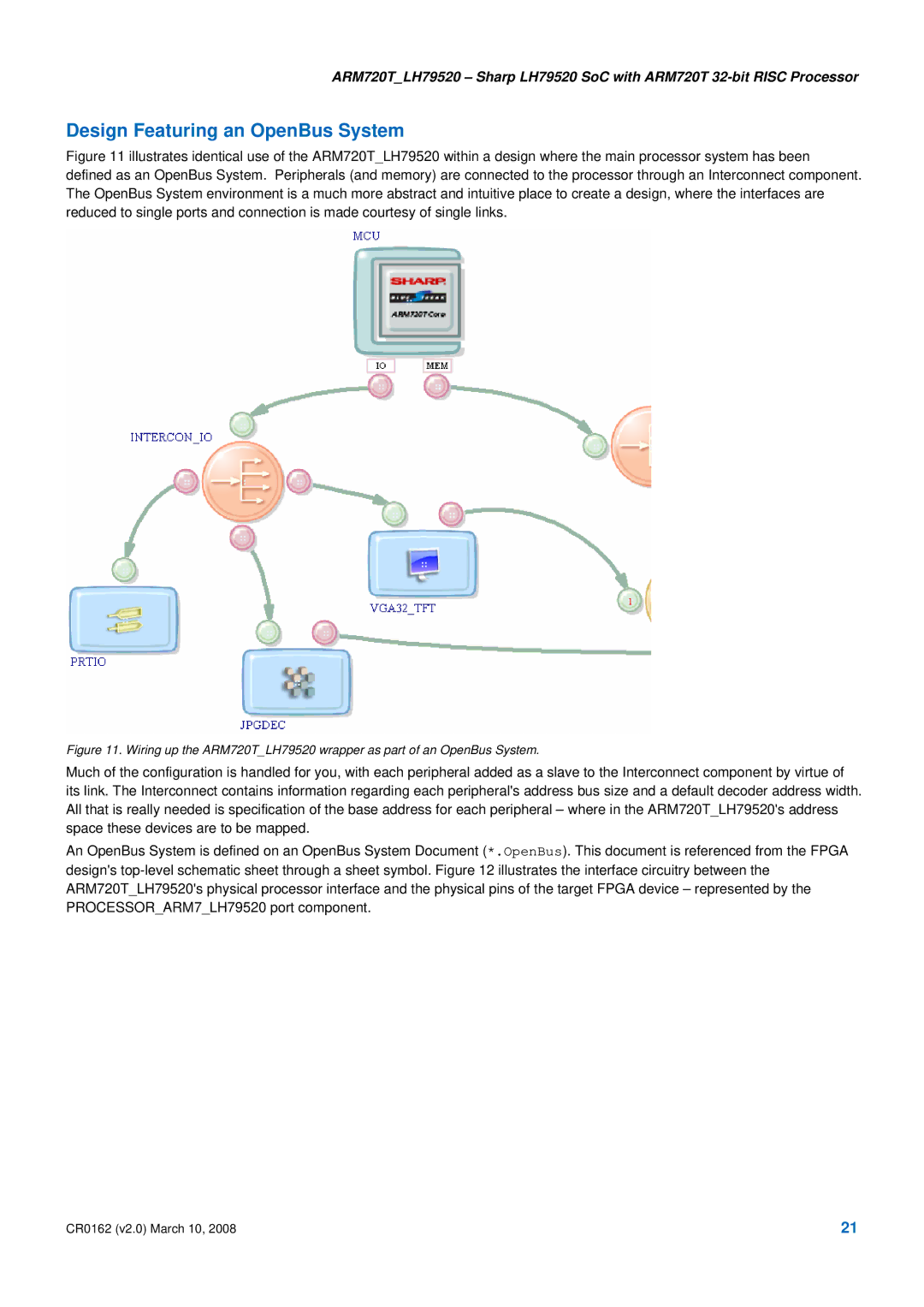
ARM720T_LH79520 – Sharp LH79520 SoC with ARM720T
Design Featuring an OpenBus System
Figure 11 illustrates identical use of the ARM720T_LH79520 within a design where the main processor system has been defined as an OpenBus System. Peripherals (and memory) are connected to the processor through an Interconnect component. The OpenBus System environment is a much more abstract and intuitive place to create a design, where the interfaces are reduced to single ports and connection is made courtesy of single links.
Figure 11. Wiring up the ARM720T_LH79520 wrapper as part of an OpenBus System.
Much of the configuration is handled for you, with each peripheral added as a slave to the Interconnect component by virtue of its link. The Interconnect contains information regarding each peripheral's address bus size and a default decoder address width. All that is really needed is specification of the base address for each peripheral – where in the ARM720T_LH79520's address space these devices are to be mapped.
An OpenBus System is defined on an OpenBus System Document (*.OpenBus). This document is referenced from the FPGA design's
CR0162 (v2.0) March 10, 2008 | 21 |
